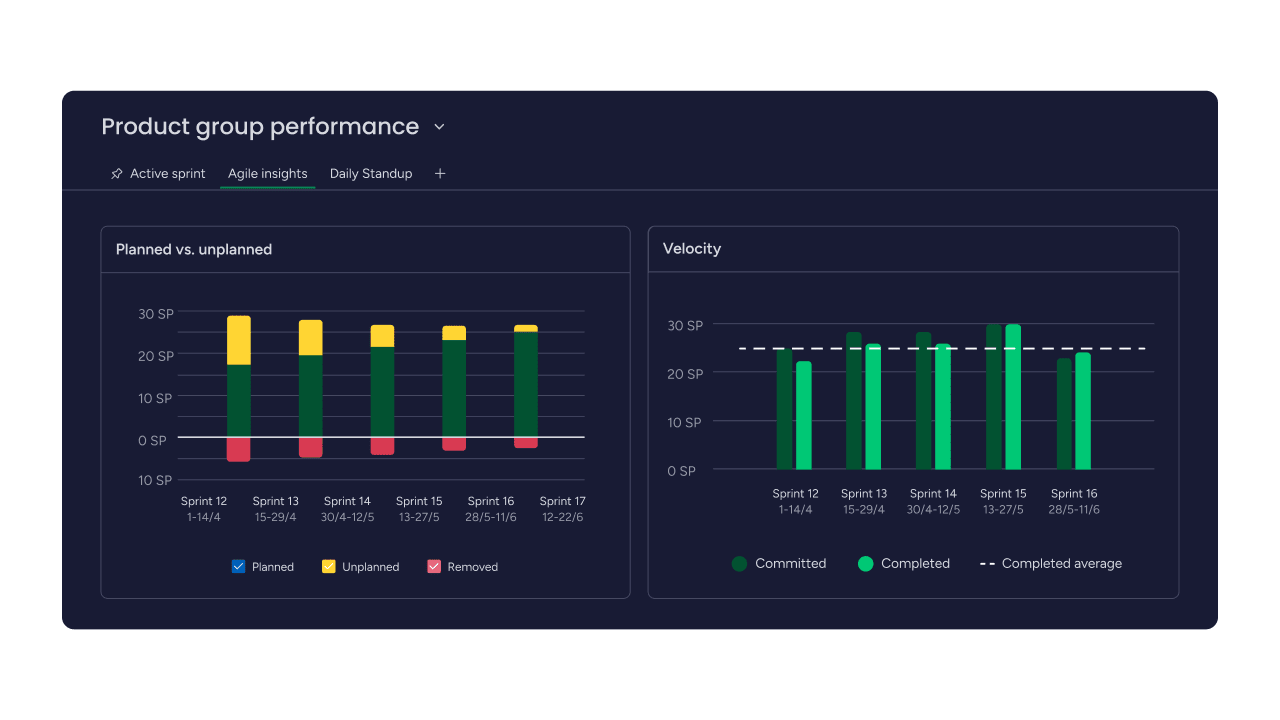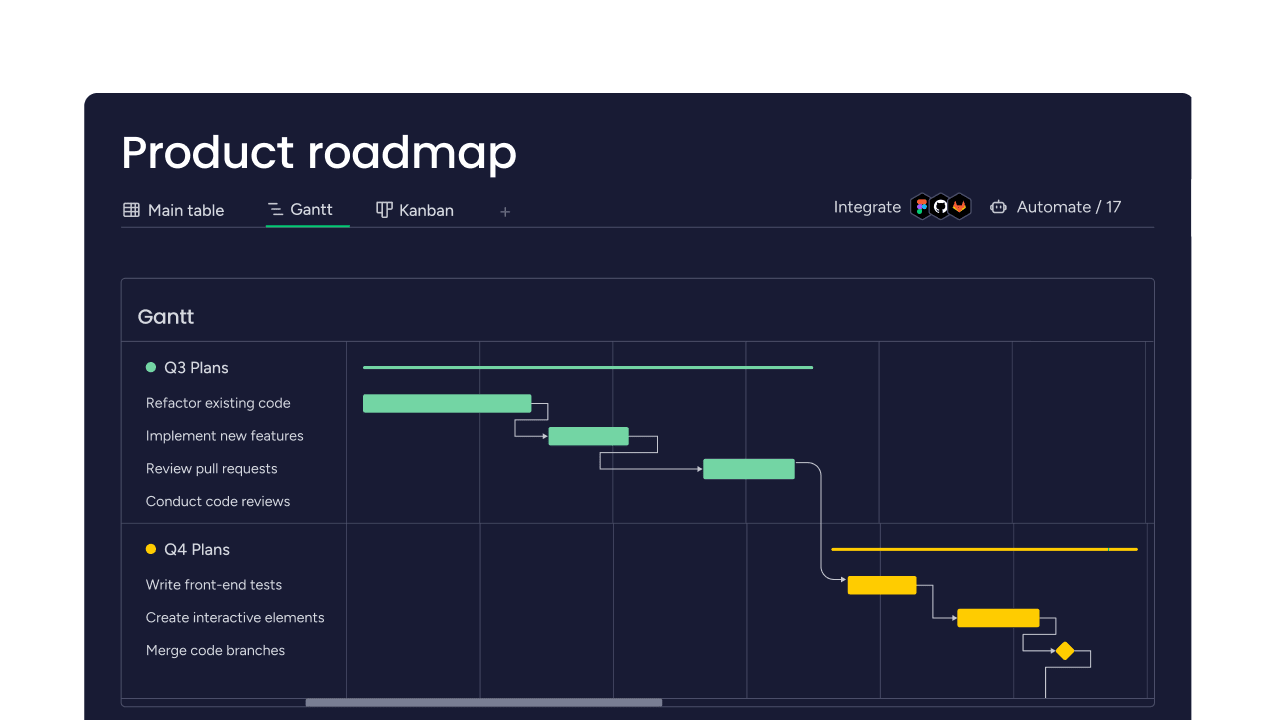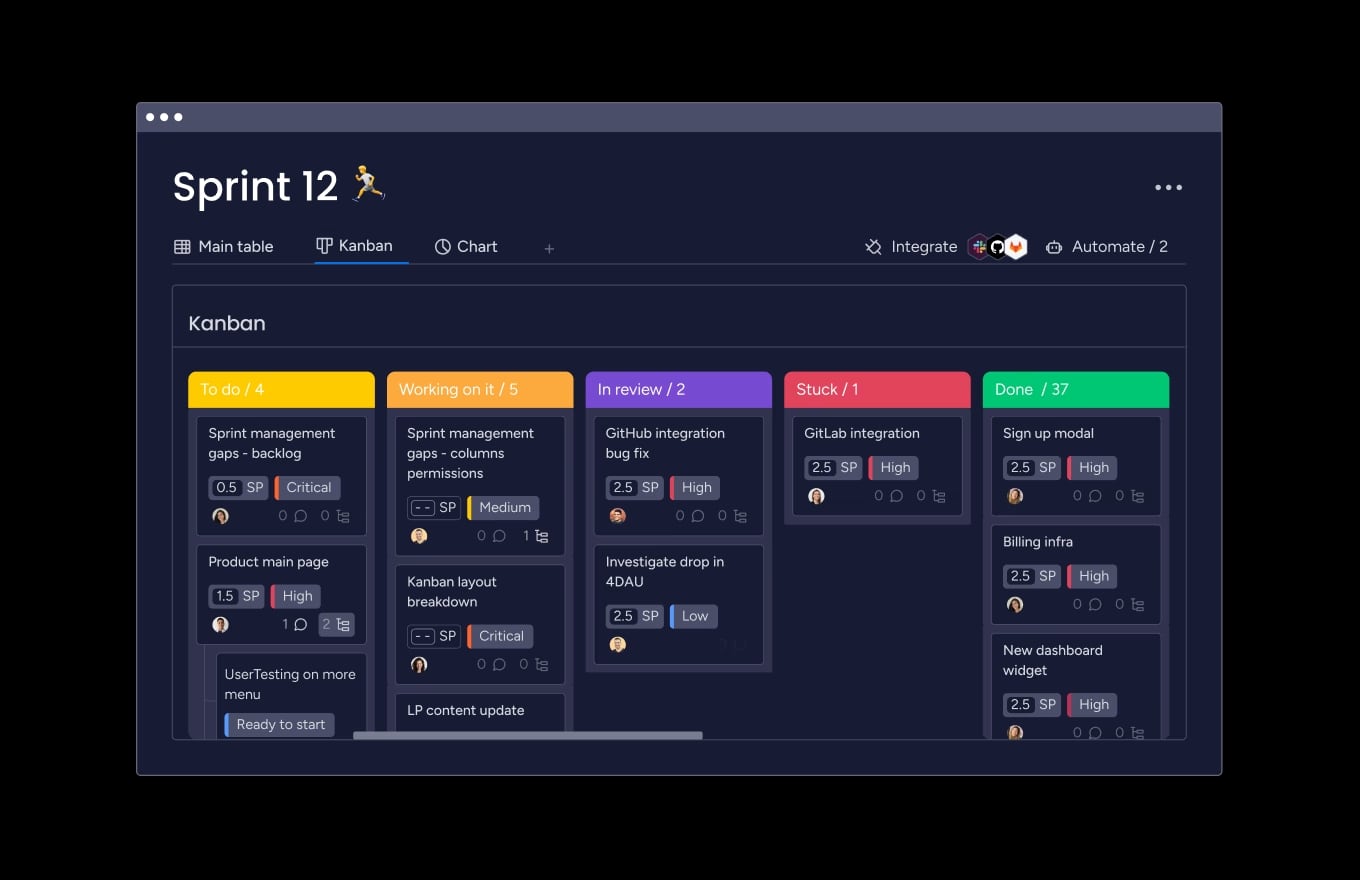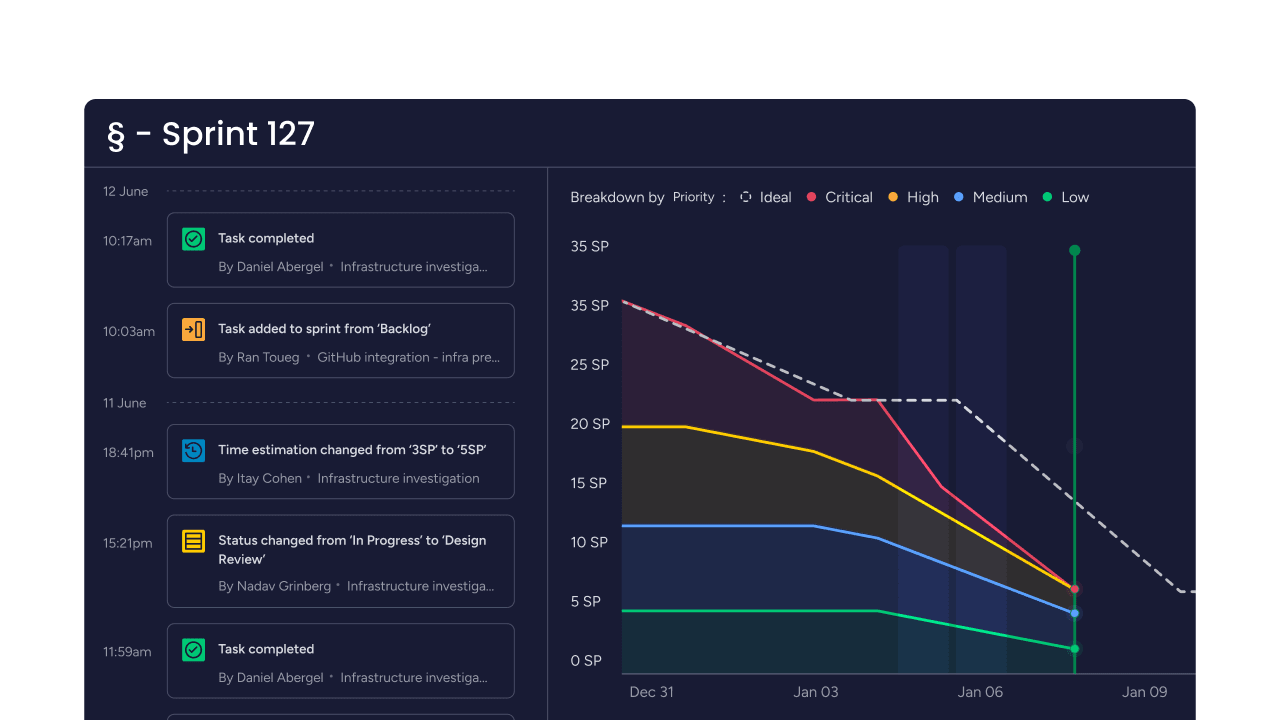Forcing a single agile framework on every project is comparable to giving a master chef only one knife for every meal. While it may suffice, this approach ignores the unique ingredients of the team, the complexity of the task, and the specific operational realities. Instead of creating an optimal outcome, this one-size-fits-all approach often generates friction, slows delivery, and restricts a team’s full potential.
Disciplined Agile (DA) offers a more pragmatic path. It functions as a flexible toolkit rather than a strict rulebook, providing teams with multiple options to build a Way of Working (WoW) that genuinely fits their situation. DA recognizes that what works for a small startup will not work for a regulated enterprise, empowering teams to make context-aware decisions for themselves.
In this insightful article we’ll explore the core principles of Disciplined Agile, uncover how it compares to other popular frameworks, and discuss the different lifecycle options available for adoption.
We will also detail how to choose the right practices for your specific context and demonstrate how to build adaptive workflows that evolve with your team.
Key takeaways
- Disciplined Agile (DA) provides choice: DA offers teams the freedom to choose their own Way of Working (WoW) based on their unique context, leading to faster decisions and greater team confidence, rather than enforcing one rigid methodology.
- Context counts more than rules: the specific practices your team adopts must be driven by situational factors — including team size, regulatory needs, and technical complexity — not by strictly following generalized rules.
- Flexible platforms enable DA: platforms that offer adaptable workflows, such as monday dev, allow organizations to build and evolve any DA lifecycle or process while maintaining alignment and real-time visibility across engineering, business, and leadership.
- Prioritize outcomes over process: for successful DA adoption, focus on proving business value and achieving measurable outcomes rather than striving for perfect adherence to specific processes or theories.
- DA scales across the enterprise: DA provides necessary guidance for coordination, governance, and continuous improvement, making it suitable for any scale, from small five-person startups to global, regulated enterprises.
What is Disciplined Agile?
Disciplined Agile (DA) is a process decision framework that helps teams choose their way of working based on their unique situation. Unlike rigid methodologies that force everyone into the same playbook, a Disciplined Agile approach provides guidance and options so teams can select practices that actually fit their context.
More accurately described as a toolkit rather than a rulebook, Disciplined Agile method recognizes that a startup building a mobile app faces different challenges than a financial services company managing regulatory compliance. Both teams get the freedom to pick practices that work for them, whether that’s Scrum ceremonies, Kanban workflows, or a custom hybrid approach.
The evolution of Disciplined Agile
Disciplined Agile has evolved significantly since its early days, growing from a development-focused framework into a broad toolkit used across entire organizations. Understanding this evolution helps explain why it works so well in complex environments.
From Disciplined Agile delivery to enterprise toolkit
DA started as Disciplined Agile Delivery (DAD), a framework specifically for software development teams. DAD filled a gap by providing guidance for the Agile SDLC: from planning through deployment and support.
Over time, DA expanded beyond software delivery. The framework now includes guidance for DevOps, data management, security, and IT operations. This expansion reflects reality: Agile teams don’t work in isolation. They need to coordinate with other departments and meet organizational governance requirements.
The PMI acquisition and global reach
In 2019, the Project Management Institute (PMI) acquired Disciplined Agile. This brought Disciplined Agile adoption into alignment with established project management standards and made certification programs accessible worldwide. According to Bloomberg’s “2025 State of Agile” report, Disciplined Agile certifications grew by 45% globally between 2020 and 2024, with adoption rates highest in regulated industries such as finance and healthcare.
The acquisition gave organizations confidence in adopting DA. PMI’s backing connected DA with a global network of project management professionals, accelerating adoption across industries.
Why do complex organizations choose DA?
Large organizations face challenges that simple Agile frameworks can’t address. They need to coordinate multiple teams, manage dependencies, and maintain governance without slowing delivery.
Disciplined Agile scaling from five-person startups to global enterprises. The framework supports coordination at every level: from individual teams to portfolios of initiatives. Teams using DA understand how their decisions impact the broader organization and align their work accordingly.
8 core principles of Disciplined Agile
At the heart of Disciplined Agile is a collection of guiding principles that help teams navigate complexity with confidence. Understanding these principles below makes it much easier to apply DA in real-world situations.
1. Delight customers
DA puts customer satisfaction at its heart. Teams focus on understanding what customers actually need and delivering solutions that exceed expectations.
When forming teams, DA encourages selecting members based on their ability to understand customer needs. Regular customer engagement validates assumptions and guides adjustments.
2. Be awesome
This principle emphasizes creating environments where team members do their best work. DA recognizes that motivated teams deliver superior results.
Being awesome means building high-performing teams through pair programming, knowledge sharing, and collaborative problem-solving. When people feel supported, they take ownership and drive improvement.
3. Context counts
No two teams are alike. Teams assess their specific situation before choosing practices. Context includes:
- Team size: small teams need different coordination than large ones.
- Industry regulations: compliance requirements shape process choices.
- Technical complexity: architecture influences workflow decisions.
- Organizational culture: company values affect team dynamics.
4. Be pragmatic
DA values practical solutions over theoretical purity. Teams choose practices that work in their situation, even if they don’t perfectly align with a specific methodology.
Being pragmatic means recognizing when good enough is sufficient. Teams balance quality with speed, making trade-offs that align with business priorities.
5. Choice is good
DA offers multiple ways to achieve each process goal. For requirements gathering, one team might use user stories while another chooses detailed process models, both based on their needs.
This principle acknowledges there’s no single right way to work. Different situations call for different approaches.
6. Optimize flow
Teams focus on delivering value from idea to customer. This means looking at the entire value stream, not just individual team productivity.
A DA team might streamline handoffs between development and operations to reduce lead time. They visualize an Agile workflow, measure cycle times, and continuously improve processes.
7. Enterprise awareness
DA teams understand their impact on the broader organization. They consider enterprise architecture, data governance, and business strategy in daily work.
This awareness prevents duplication and ensures solutions integrate smoothly with existing systems. Teams balance autonomy with alignment.
8. Organize around products and services
DA encourages structuring teams around long-lived products rather than temporary projects. This promotes continuity and deep domain knowledge.
Product-focused teams take ownership from conception through ongoing support. They develop expertise and maintain accountability for long-term outcomes.

Disciplined Agile compared to Scrum, SAFe, and Kanban
Understanding how Agile project management compares to other frameworks can also help you make informed decisions about which approach fits your needs.
Disciplined Agile vs Scrum
Disciplined Agile (DA) and Scrum represent two different approaches to achieving agility, with DA offering a far greater degree of flexibility and scope compared to Scrum’s prescriptive nature.
- Scrum’s focus: Scrum is highly prescriptive, requiring specific roles (like the Scrum Master) and fixed ceremonies (like sprints). Its primary focus is on the productivity and management of single, individual teams, with less emphasis on cross-departmental coordination or enterprise-wide strategy.
- DA’s focus: Disciplined Agile operates as a flexible toolkit, allowing teams to choose which practices, roles, and lifecycles work best for their unique context. It emphasizes enterprise awareness, ensuring alignment with the broader organizational strategy and making it ideal for environments requiring coordination across departments and compliance with strict governance.
Disciplined Agile vs SAFe
DA uses a bottom-up approach, empowering teams to make choices. SAFe employs top-down coordination through defined roles and layers.
Both address enterprise scaling differently. Disciplined Agile practice emphasizes choice and adaptability while SAFe offers detailed blueprints for large-scale coordination. Teams valuing autonomy often prefer DA.
Disciplined Agile vs Kanban
Kanban provides a simple approach for visualizing work. DA treats Kanban as one option among many, giving teams broader guidance when needed.
Kanban excels at optimizing workflows and making bottlenecks visible. DA incorporates these benefits while addressing architecture, governance, and enterprise alignment.
Choosing the right framework for your context
- Choose DA when: you need flexibility across diverse projects or must integrate with enterprise processes.
- Choose Scrum when: you have a small team with straightforward requirements wanting a simple starting point.
- Choose SAFe when: you need top-down coordination across many teams with detailed structure.
- Choose Kanban when: your primary goal is optimizing existing workflows with visual management.
Developing your custom DA Way of Working
Disciplined Agile works best when teams tailor it to their specific environment. Here’s how to create a custom Way of Working by evaluating your context, setting goals, and selecting practices that align with your needs.
Building your unique Way of Working
Teams build their Way of Working (WoW) through a structured process. First, they evaluate their context: skills, constraints, goals, and environment. This assessment goes beyond surface factors to consider technical complexity and regulatory requirements.
Next, teams identify specific goals like faster delivery or improved quality. Clear goals provide direction for choosing practices.
Teams then select from DA’s toolkit. They might choose Scrum ceremonies for planning, Kanban boards for visualization, or an Agile development process combining multiple methodologies. monday dev supports any combination, enabling teams to build workflows that truly fit.
Selecting practices that fit your team
DA organizes practices around process goals rather than prescribing methods. When teams need to “explore initial scope,” DA offers options from user story mapping to detailed requirements documents.
This flexibility extends to every aspect of work. Teams choose how they plan iterations, coordinate with stakeholders, ensure quality, and deploy solutions, forming an Agile development process. DA provides guidance without dictating answers.
Evolving your WoW through guided continuous improvement
Disciplined Agile (DA) requires teams to adopt a mindset of continuous evolution, ensuring their Way of Working (WoW) remains effective and relevant. This is achieved through systematic assessment and data-driven experimentation.
- Teams regularly assess their WoW: they use retrospectives and experimentation as mechanisms to regularly review and refine their current Way of Working.
- Track key performance metrics: teams track essential data, including cycle time, defect rates, and customer satisfaction, to identify specific, data-driven areas for improvement.
- Incorporate successful experiments: when experiments yield positive results, they are formally incorporated into the team’s standard WoW.
- Learn from unsuccessful attempts: unsuccessful experiments are treated as learning opportunities, prompting the team to try different approaches rather than giving up.
- Maintain adaptability: this evolutionary process ensures that practices and workflows do not become outdated, which maintains high performance and adaptability over time.

Choosing your DA lifecycle: 5 key models
Disciplined Agile offers several lifecycle options so teams can choose the delivery model that fits their work, constraints, and goals. This section explores the five key lifecycles and when each one makes the most sense.
1. Agile lifecycle for feature-driven teams
The Agile lifecycle suits established products with clear requirements and regular releases. Teams work in iterations, hold planning sessions, and adapt practices for flexibility.
Teams typically plan work in one- to four-week iterations. They hold regular planning, daily coordination, and review sessions. Retrospectives help continuous improvement.
2. Lean lifecycle for continuous flow
The lean lifecycle optimizes flow and reduces waste. It suits maintenance teams or environments needing continuous delivery.
Teams visualize workflow using Kanban boards and limit work in progress. They focus on reducing cycle time and eliminating bottlenecks.
3. Continuous delivery Agile for rapid releases
This lifecycle combines Agile development with continuous delivery. Teams release updates frequently through automated build, test, and deployment processes.
It requires strong technical practices and close collaboration between development and operations. Teams integrate code frequently and deploy multiple times daily or weekly.
4. Continuous delivery lean for streamlined operations
This advanced lifecycle blends lean flow with automated deployment. Teams pull work as capacity allows and deploy automatically when complete.
Organizations using this model achieve high-frequency releases but need significant investment in automation and process refinement.
5. Exploratory lifecycle for innovation projects
The exploratory lifecycle supports high-uncertainty projects like research or proof-of-concepts. Teams operate in short cycles, forming hypotheses and experimenting quickly.
Teams embrace uncertainty and focus on validated learning. They run experiments, gather data, and pivot when hypotheses prove incorrect.
How to navigate process goals to make smarter decisions
Disciplined Agile uses process goals to simplify complex decisions and keep teams aligned. Here’s how they help you select the most effective practices at every stage:
Inception phase goals that set you up for success
During inception, teams align with enterprise direction. They ensure projects fit organizational strategy and deliver value supporting business goals.
Key inception activities include:
- Architecture strategy: planning technical approach to reduce risk.
- Release planning: defining scope, timeline, and milestones.
- Team formation: assembling skills and establishing relationships.
- Scope exploration: clarifying deliverables and boundaries.
Construction phase goals that keep teams on track
Construction focuses on producing working solutions. Teams deliver regularly, ensuring stakeholders see progress and provide feedback.
Teams also address changing needs while maintaining business alignment. They prove architecture early through working code and continuously improve their process through retrospectives.
Transition phase goals that ensure smooth delivery
Transition ensures production readiness. Teams validate quality, security, and performance before deployment.
Successful deployment requires planning, coordination, and communication. Teams prepare operations staff, complete documentation, and ready users for change.
Ongoing goals for continuous improvement
Throughout the lifecycle, teams focus on growing members through skill development. They leverage existing infrastructure and maintain governance, ensuring compliance while preserving autonomy.
Modern solutions like monday dev capture these decisions in customizable boards, keeping everyone aligned as work progresses.

Essential roles in disciplined Agile teams explained
Disciplined Agile (DA) defines roles based on the specific team needs and context, rather than enforcing a fixed structure. This flexibility means different situations require different role combinations. Roles are grouped into three key categories:
- Primary Team Roles: these roles form the core team responsible for execution. They include the Team Lead (guides the Way of Working), the Product Owner (represents stakeholder needs), and the Team Members (contribute specialized skills). The Architecture Owner is essential for guiding technical decisions in complex projects.
- Supporting Specialists: these individuals join the team on a temporary or as-needed basis to provide expertise. Examples include Domain Experts (business knowledge), Technical Experts (specialized skills), Independent Testers (quality validation in high-risk projects), and Integrators (manage multi-system initiatives).
- Leadership Roles: these roles provide necessary oversight and strategic context. They include Stakeholders (give ongoing feedback), Senior Management (provide resources and support), and Enterprise Architects (ensure alignment with organizational standards and strategy).
Real benefits and common challenges of Disciplined Agile
As organizations adopt Disciplined Agile, they experience both powerful improvements and predictable hurdles. Knowing what to expect makes it easier to maximize the value of DA while managing its challenges effectively.
Key advantages of the DA approach
DA enables faster time-to-market by helping teams select speed-optimizing practices. Risk reduction comes from built-in governance and enterprise awareness.
Quality improves through multiple testing options teams can choose based on context. Stakeholder satisfaction increases through flexible requirements handling and transparent communication.
Team morale improves when teams control their way of working. Autonomy boosts engagement and retention.
Implementation challenges to anticipate
The learning curve can be steep for teams new to DA. Decision paralysis may occur with too many choices. Organizational resistance arises when enterprise awareness conflicts with existing silos.
Coaching requirements increase as teams need expert guidance navigating choices and adopting practices.
Proven strategies for successful adoption
Start with pilot teams to demonstrate value before scaling. Invest in coaching for expert guidance. Focus on business outcomes rather than process adherence.
Evolve gradually, implementing changes incrementally. Build on successes and learn from setbacks. Advanced platforms like monday dev support this evolution with flexible workflows teams can adjust as they grow.

When should your organization adopt Disciplined Agile?
As teams grow and work becomes more complex, certain pain points start to appear. These moments often signal that your organization is ready for Disciplined Agile. Here’s how to recognize when the shift makes sense.
Signs you need more than basic Scrum
Basic Scrum works well for small, focused teams with straightforward projects. But as your organization grows in complexity, you’ll start noticing friction points that signal the need for a more comprehensive framework. Here are the key indicators that it’s time to consider Disciplined Agile:
- Multiple team coordination: work spanning several teams.
- Regulatory requirements: documentation and audit needs.
- Legacy system integration: complex existing infrastructure.
- Diverse team contexts: varying skills and domains.
- Enterprise stakeholders: broader organizational impact.
Enterprise complexity indicators
Geographic distribution creates coordination challenges. Technology diversity increases integration complexity. Stakeholder variety necessitates frequent alignment. Integration requirements increase risk.
Team and cultural readiness factors
Success requires learning orientation — teams willing to experiment and adapt. Decision-making maturity enables informed practice choices. Leadership support provides resources for learning. Change tolerance helps organizations embrace DA’s adaptive approach.
Implementing Disciplined Agile in modern development
Successful adoption of Disciplined Agile (DA) requires overcoming technical and organizational hurdles by using adaptive platforms and tailored measurement systems.
- Breaking free from platform limitations: rigid platforms constrain Agile adoption. DA’s flexibility requires tools supporting multiple working methods. Custom workflows are essential to implement chosen practices, and seamless integration capabilities must connect the DA process with all existing enterprise systems.
- Creating adaptive workflows for any context: workflows must start simple and evolve over time, adapting to the specific team context (e.g., startup vs. enterprise). Flexible tools support this adaptation, allowing teams to customize templates as they learn. Automation reduces manual work, and AI helps categorize work, accelerating feedback.
- Measuring success with meaningful metrics: DA demands that teams select context-appropriate indicators that reflect true business value, moving beyond generic metrics. This includes tracking Business value delivery, quality indicators, flow efficiency to spot bottlenecks, and team health metrics for sustainable practices.

"monday dev empowered us to optimize our GTM approach, resulting in faster, more dependable deliveries"
Steven Hamrell | Director of Product Management
"monday dev empowers us to manage the entire development process on one platform so we can speed up product delivery and improve customer satisfaction"
Mitchel Hudson | Head of Technology
"We're operating in an open, deep trusting, transparent environment with no silos of information. It's about completely opening access to everyone who needs it."
Alan Schmoll | Executive Vice President, Vistra PlatformThe future of disciplined Agile with AI and remote teams
A new chapter of Disciplined Agile is emerging as AI enhances decision-making and distributed teams demand more flexible coordination. These trends are shaping how organizations will apply DA in the years ahead:
- AI-powered process optimization: AI helps DA teams make informed decisions by analyzing performance data. Predictive analytics forecast sprint outcomes. Autonomous agents clean backlogs automatically. Automated item creation streamlines work intake from customer feedback.
- Adapting DA for distributed teams: DA principles apply seamlessly to remote teams. Asynchronous standups accommodate different schedules. Digital whiteboards enable remote collaboration. Flexible sprint planning works across time zones.
- Emerging trends shaping enterprise agility: platform engineering supports multiple team workflows through shared services. Developer experience focus prioritizes productivity and satisfaction. Continuous compliance integrates governance into daily workflows. Value stream optimization improves end-to-end flow.
Transform your Disciplined Agile journey with monday dev
To unlock the full potential of Disciplined Agile, teams benefit from a platform designed for flexibility, and monday dev delivers that foundation. Its customizable boards and automation features make it easier to build a WoW that evolves with your goals.
Build any way of working with flexible workflows
The platform’s customizable workflows let teams implement any DA lifecycle: from Agile to lean to continuous delivery. Use sprint boards with customizable columns to match your chosen practices, set up automation recipes that trigger actions based on your team’s unique rules, and leverage pre-built templates for Scrum, Kanban, or hybrid approaches that you can modify as your way of working evolves.
Connect teams across your entire enterprise
DA’s enterprise awareness comes alive through monday dev’s cross-board connections and dependencies. Link related items across development, operations, and business teams so everyone sees how their work impacts the bigger picture.
Further, use the workload view to balance capacity across teams, set up mirrored columns to sync data automatically between boards, and give stakeholders and leadership real-time visibility through customizable dashboards — no status meetings required.
Track process goals with real-time visibility
Reporting widgets and analytics provided by monday dev let teams track DA process goals in real time. Build custom dashboards that display cycle time, velocity, and quality metrics that matter to your context. Use the timeline view to visualize dependencies and identify bottlenecks, leverage burndown charts to monitor sprint progress, and set up automated alerts when metrics fall outside acceptable ranges so you can make data-driven improvements to refine your way of working.
Start your DA transformation today
Teams beginning their disciplined Agile journey find monday dev provides the flexibility and insights needed to succeed. Start with our Agile sprint template and customize it to match your chosen practices, or build your workflow from scratch using our no-code builder.
Move beyond rigid platforms and achieve enterprise agility with a tool that adapts to your team, not the other way around.
Frequently asked question
What happened to disciplined Agile after PMI acquired it?
PMI’s acquisition of Disciplined Agile expanded its reach and credibility by integrating it with global project management practices. The framework maintained its core principles and flexible approach while gaining access to PMI’s resources, certification programs, and worldwide network of practitioners.
How long does disciplined Agile implementation take?
Disciplined Agile implementation typically takes three to six months for pilot teams to see initial results. Full enterprise rollouts usually require one to two years, with progress occurring gradually as teams evolve their way of working and build capability through practice and coaching.
Can Disciplined Agile work with platforms like Jira?
Disciplined Agile works with any platform, including Jira, since it’s a process framework rather than a technology requirement. However, flexible platforms like monday dev support DA’s emphasis on choice and adaptation more effectively than rigid platforms with fixed workflows.
What Disciplined Agile certifications are available?
PMI offers several Disciplined Agile certifications including Disciplined Agile Scrum Master (DASM), Disciplined Agile Senior Scrum Master (DASSM), Disciplined Agile Value Stream Consultant (DAVSC), and Disciplined Agile Coach (DAC). Each certification targets different experience levels and roles within DA implementations.
Is Disciplined Agile suitable for small development teams?
While Disciplined Agile excels in complex enterprise environments, small teams benefit from its goal-driven approach and ability to choose practices fitting their context. Small teams can start simple and evolve their way of working as they grow, making DA valuable at any scale.
How does Disciplined Agile handle regulatory compliance?
Disciplined Agile’s enterprise awareness and governance practices make it well-suited for regulated industries. The framework provides built-in guidance for documentation, auditability, and compliance requirements while maintaining agility through context-appropriate practice selection and risk-based decision making.
 Get started
Get started 

